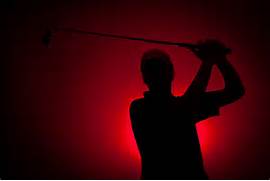MASTER of MIND"FULL"NESS
The mind is a remarkable gift; however, a single, errant golf ball in the pond on the right of the fairway can rapidly orchestrate a disruptive, conscious mind ramble of swing thoughts. As Voltaire reminds, “The perfect is the enemy of the good.” Perhaps trusting the subconscious mind can enable us to avoid two errant shots from insanity. Let’s peek at a recent journey into the subconscious mind and the opening of a new area for awareness: the part of our mind where 90% of life’s experiences reside.
Interest in the subconscious was inspired by a frustrating journey of “rightitus and pullitius.” The trek started with the coach: we uncovered 32 symptoms that were practiced and taken to the course; and the push right, pull left continued. After reflection and study of literature, a conclusion was that perhaps the root cause was “timing” that was not allowing the clubface to arrive square to the ball-target line at impact. Sounded simple!
Study quickly revealed that timing was a process: synchronous, one piece take-away; back swing to transition (unhurried, 45-degree hip turn; 90-degree shoulder turn; shoulder tilt); smooth transition; accelerating forward swing launched with left hip and knee turn and unwinding upper torso; followed by arms, wrists and hands gripping the golf club arriving with a clubface square to the ball-target line at impact; hands pointing to the intended target. Not an easy fix! Even attempted writing a song to facilitate smoothness, rhythm, timing and tempo.
Enter the concept of trust the subconscious to perform: with passion burning, the captain of the ship squeezes the auto-pilot button and trusts the carefully programmed subconscious to creatively deliver a ball to an intended target. Tiger Woods commented, “I have learned to trust the subconscious, and my instincts have never lied to me.” Joan King offers, “When you are playing at your peak levels, you are trusting your game to your subconscious mind and allowing your swing to happen automatically.”
Perhaps there was nothing wrong with the swing except that the conscious mind “thought” there is something wrong. The “ah-ha:” thinking about mechanics results in jerky, inconsistent, off-balance, out-of-tempo, and off-line shots; and If pieces of the swing are practiced, the on-the course result is pieces of the swing. What pre-shot routine and ritual are working?
- SMILE!! DEEP BREATHING!!
- MASTER of MIND”FULL”NESS MANTRA: inherent in essence is the power-conscious mind, subconscious mind and superconscious mind-to manifest a desired result through the personality and character.
- Select club.
- See and deeply feel ball at target.
- Feel initial hip turn; width of arc; release from transition; clubface square to ball-target line at impact through release, extension and finish (right heel showing).
- Deeply feel trust of subconscious to manifest the desired result.
- Immaculate set-up.
- Be mindful; relaxed focus; pull trigger.
- CELEBRATE! And remember to check Xlibris.com for newly released Golf as Guru: Mindfullness, Awareness and Self-Restraint. You will be pleased to meet Woody and Birdy Ball.
Some subconscious literature sources:
- Allen, D. (2017). The Secrets, Mysteries and Powers of the Subconscious Mind.
- Bargh, J. (2017). Before You Know It: The Unconscious Reasons We Do What We Do. New York, NY: Simon & Schuster.
- Fried, K. (2019). Subconscious Power: Use Your Inner Mind to Create the Life You’ve Always Wanted. New York, NY: Simon & Schuster.
- Hill, N. (2019). Think and Grow Rich: The Secret To Wealth For The 21st Century. DeMarque. Amazon Whispernet.
- King, J. (2017). The Heart of Golf: Access Your Supreme Intelligence for Peak Performances. Amazon Whispernet.
- Murphy, J. (2019). The Power of Your Subconscious Mind. DeMarque. Amazon Whispernet.
- Sternberg, E. (2016). NeuroLogic: The Brain’s Hidden Rationale Behind Our Irrational Behavior. New York, NY: Random House.


